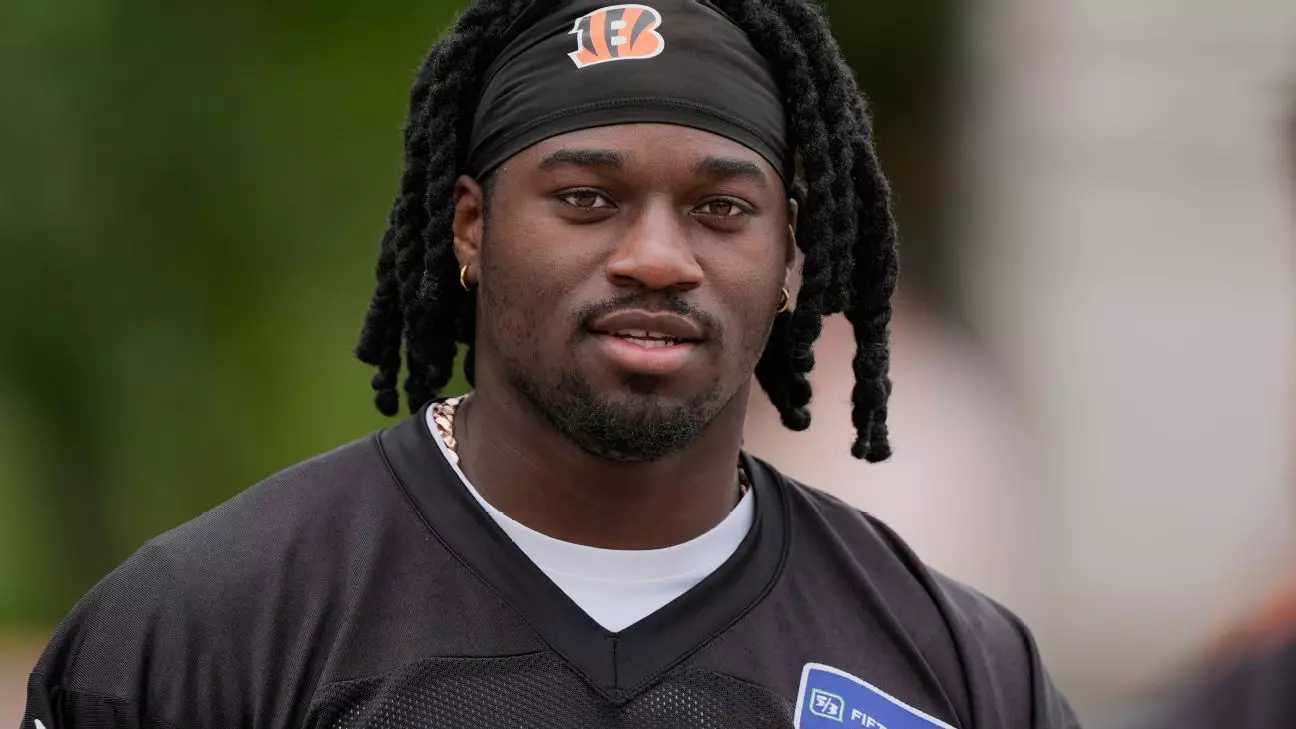Negotiating a rookie contract in the NFL is far more than a straightforward signing; it is a nuanced battlefield where teams and players’ representatives navigate a web of financial incentives, legal safeguards, and strategic positioning. The recent contract agreement between Shemar Stewart and the Cincinnati Bengals exemplifies these complexities vividly. While on the surface, it appears as a routine deal finalization, the underlying negotiations reveal a vigorous tug-of-war over guaranteed money, contractual protections, and future leverage.
This situation underscores a broader trend where top draft picks leverage negotiations to upend traditional rookie contract norms. Stewart’s initial reluctance and absence from training camp, driven by disagreements over language that could void guaranteed money, demonstrate that strategic disputes serve the interests of high-profile rookies seeking to maximize early financial security. Teams, meanwhile, often insert clauses such as the “void language” mentioned here, aiming to mitigate risk but sometimes risking disruption and discord.
The story highlights that rookie contracts have become arenas for players to push for more advantageous terms, with guaranteed money remaining a core point of contention. Stewart’s negotiation showcases how young athletes are increasingly aware of their value and willing to delay signing or holding out to secure better protections. This evolving dynamic forces teams to adapt their standard procedures, sometimes leading to more lucrative overall deals for players willing to stand firm.
Balancing Risk and Reward: The Bengals’ Strategy and Its Implications
The Bengals’ approach of incorporating void language reflects a cautious but strategic effort to manage financial exposure. As team president Mike Brown explicitly mentioned, the clause provides a safeguard against future misconduct or legal issues that could jeopardize guaranteed funds. It exemplifies a broader trend where NFL teams craft contracts that protect their investments while offering early-round picks a significant signing bonus and guaranteed payout.
However, this contractual strategy comes with consequences. Stewart’s initial protest — skipping workouts and the first week of camp — signals discontent and highlights how such clauses, if perceived as overly restrictive, can strain relationships and stall team integration. His decision to delay signing sent a subtle message about player empowerment and the willingness to stand up against perceived unfairness, especially for a first-rounder with considerable leverage.
This stance may set a precedent for future negotiations, encouraging other rookies to demand similar protections and potentially challenging teams’ traditional bargaining power. Cincinnati’s deal not only rewarded Stewart with a more beneficial payout structure but also illuminated the delicate balance teams must strike: providing enough security to keep top talent engaged while safeguarding against long-term risks. Such strategies could influence how future rookie contracts are drafted across the league.
Lessons from Past and Present Negotiations
The Stewart case echoes historical instances like Roquan Smith’s prolonged holdout in 2018, revealing how young players increasingly see contract language as a battlefield for future earnings and protections. These clashes highlight an evolution in NFL contract culture: young athletes are more aware of their market value and are willing to push boundaries to secure it.
Furthermore, Cincinnati’s stance as one of the last teams to include void language indicates a cautious but firm approach. Director of player personnel Duke Tobin referenced this, emphasizing the team’s intent to protect themselves without alienating potential star players. The fact that other draft picks signed without issue signals that Stewart’s negotiations were a singular statement—yet one with ripple effects that could influence league-wide contract strategies.
The unresolved situation with Trey Hendrickson also shows that contractual negotiations remain ongoing and fraught with tension. As a player approaching free agency, Hendrickson’s real aim is to secure a deal commensurate with his performance, reflecting how contractual disputes often intertwine with player valuation and team confidence.
The Power Dynamics of Contract Negotiation
Ultimately, Stewart’s story reflects a broader truth about NFL contracts: they are negotiations of power, trust, and financial foresight. Young players, especially those drafted in high rounds, are increasingly assertive in demanding terms that favor their long-term security. Teams must juggle their immediate needs against the risk of alienating top talent.
Stewart’s delayed start and initial absence serve as a reminder that contracts are not just financial documents—they are also tools of negotiation wherein both parties seek to extract maximum value. As contracts become more intricate, with void language and other safeguards, both players and teams must navigate the evolving landscape intelligently. For Stewart, his patience and stance seem to have paid off, securing a deal that surpasses previous norms and affirms his stance as a rising star willing to assert his rights.
In the future, expect NFL rookie negotiations to grow even more sophisticated, with players demanding more control and teams becoming more creative in structuring deals. Stewart’s case has set a clear precedent: negotiations are battles of strategy, where the ultimate goal is to maximize security and leverage—an ongoing chess game between young talent and organizational pragmatism.

